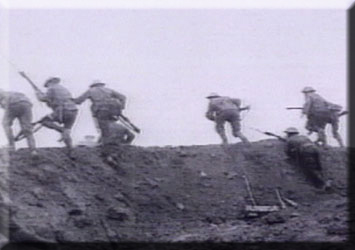 |
| Wrightscale Baldwin 4-6-0 The British army (War Department) prototype did not appear at the battle of the Somme but it was conceived at the time. Photo M.D. Wright |
To the British, used to the claim that the battle of the Somme started in July 1916, the question may be 'why are the French commemorating the battle in May?'
 |
| French and Joffre at a meeting of the Allied generals. Three such took place on the 6,7 and 8th December 1915. From Illustration magazine |
In my book Colonel Péchot: Tracks To The Trenches, I described how an artillery officer, Prosper Péchot had devised a system of portable 60cm railways for supplying their Army (and Navy). An updated version of the système Péchot was used to supply the French fronts while the German Army had their own Feldbahn system.
Why was the Somme chosen for a joint
British/French offensive?
It was a relatively quiet area. The British intended to have their volunteer army fully operational by late summer 1916. They would be to the north of the river Somme, the French more-or-less to the south. The original purpose, as stated by Joffre in December 1915, was to paralyse German communications east of St Quentin. When Verdun was attacked in February 1916, the French purpose changed. An attack in the Somme area would provide a much-needed diversion for the hard-pressed garrison, and the sooner the better. The British went along with them.
French preparations were thorough. Their 6th Army (Nord) was being supplied by three 60cm gauge systems X, C and B and a fourth, A, under construction. Their Line B ran by the Somme canal and through Cappy and then north over the Somme towards Hem-Monacu.
It was a relatively quiet area. The British intended to have their volunteer army fully operational by late summer 1916. They would be to the north of the river Somme, the French more-or-less to the south. The original purpose, as stated by Joffre in December 1915, was to paralyse German communications east of St Quentin. When Verdun was attacked in February 1916, the French purpose changed. An attack in the Somme area would provide a much-needed diversion for the hard-pressed garrison, and the sooner the better. The British went along with them.
French preparations were thorough. Their 6th Army (Nord) was being supplied by three 60cm gauge systems X, C and B and a fourth, A, under construction. Their Line B ran by the Somme canal and through Cappy and then north over the Somme towards Hem-Monacu.
The 6th Army (Sud)
from Chaulnes to Montdidier had systems D, E, F, G and H. The 10th
Army, south of Montdidier down to the department of Oise,
ran I, J, K, L and M. They are described as systems; as well as running from a
viable standard gauge or metre gauge line to the frontline area, they had
laterals and escape routes connecting them.
Until the battle was well underway, the British had almost no 60cm trench railways. It was still the era of Kitchener and a robust belief in road transport. The grand plan, worked out in 1914-15, involved building standard gauge
railways and canals to supply the Army. Indeed, these were built and
were ready by .... 1918, long after the War was supposed to be over! In short the British had one completed 60cm
line, running towards Thiepval, basically a legacy from the French Army.
When you come to Froissy, there are a number of other sites in the Somme that would interest.
When you come to Froissy, there are a number of other sites in the Somme that would interest.
 |
| The Thiepval Memorial. Photo courtesy of Pierre's Western Front, New Zealand. |
This is a cemetery, so worthy of respect. You may notice its dramatic situation. This was itself part of the tragedy. Our soldiers were fighting uphill. What a splendid, if short-lived sight they must have made! You will notice that this picture was taken by a New Zealander. One century ago, many ANZACs were fighting for the Mother Country.
The British left flank was held by Newfoundland Canadians at Beaumont Hamel.
The British left flank was held by Newfoundland Canadians at Beaumont Hamel.
 |
| Beaumont Hamel July 1916 Photo courtesy of Newfoundland and the Somme, an organisation commemorating the sacrifice of so many Canadians |
The Canadians have loyalties both to Britain and France, and so a relatively large number joined, in comparison with the population.
 |
| Photo Courtesy of NFLD - Beaumont Hamel Memorial |
Beaumont Hamel, then and now - a chance to pause and reflect.




